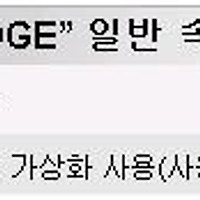Exchange Server 2007 이 출시 첫 번째로 나온 Update 입니다.
업데이트를 받으시려면 아래 다운로드를 클릭하시고, Rollup 1 의 대한 정보를 확인 하시려면 정보를 클릭하세요^^
Update Rollup 1 for Exchange Server 2007 다운로드 <= 다운로드 클릭!
Update Rollup 1 for Exchange Server 2007 정보 <= 정보 클릭!
알려진 문제
Issue 1
Certain Exchange Server services are disabled if you use Microsoft Update to deploy the update rollup or if you deploy the update rollup in silent mode. This known issue occurs only if a file that is updated by the update rollup is being used. This section contains more information about this issue.
Symptoms
You use Microsoft Update to apply Update Rollup 1 for Exchange Server 2007. Or, you apply the update rollup in silent mode. When you do this, certain services in Exchange Server 2007 are stopped and are disabled. Events that resemble the following are logged in the Application log:
Type: Error
Source: MsiInstaller
Category: None
Event ID: 11306
Description:
Product: Microsoft Exchange Server -- Error 1306. Another application has exclusive access to the file 'PathOfFile'. Please shut down all other applications, then click Retry.
For more information, see Help and Support Center at http://go.microsoft.com/fwlink/events.asp.
Data: 0000: 7b 32 34 42 32 43 31 36 {24B2C16 0008: 34 2d 44 45 36 36 2d 34 4-DE66-4 0010: 34 46 45 2d 42 34 36 38 4FE-B468 0018: 2d 41 34 36 44 39 44 35 -A46D9D5 0020: 45 36 42 33 31 7d E6B31}
Type: Error
Source: MsiInstaller
Category: None
Event ID: 1023
Description:
Product: Microsoft Exchange Server - Update 'Update Rollup 1 for Exchange Server 2007 (KB930809) 8.0.708.3' could not be installed. Error code 1603. Additional information is available in the log file Drive:\FileName.log.
For more information, see Help and Support Center at http://go.microsoft.com/fwlink/events.asp.
Data: 0000: 7b 32 34 42 32 43 31 36 {24B2C16 0008: 34 2d 44 45 36 36 2d 34 4-DE66-4 0010: 34 46 45 2d 42 34 36 38 4FE-B468 0018: 2d 41 34 36 44 39 44 35 -A46D9D5 0020: 45 36 42 33 31 7d 20 7b E6B31} { 0028: 44 43 46 35 41 46 45 32 DCF5AFE2 0030: 2d 45 38 30 41 2d 34 32 -E80A-42 0038: 46 42 2d 41 36 30 44 2d FB-A60D- 0040: 41 33 42 37 35 45 38 45 A3B75E8E 0048: 43 33 39 34 7d 20 31 36 C394} 16 0050: 30 33 03
Type: Information
Source: MsiInstaller
Category: None
Event ID: 11729
Description:
Product: Microsoft Exchange Server -- Configuration failed.
For more information, see Help and Support Center at http://go.microsoft.com/fwlink/events.asp.
Data: 0000: 7b 32 34 42 32 43 31 36 {24B2C16 0008: 34 2d 44 45 36 36 2d 34 4-DE66-4 0010: 34 46 45 2d 42 34 36 38 4FE-B468 0018: 2d 41 34 36 44 39 44 35 -A46D9D5 0020: 45 36 42 33 31 7d E6B31}
Additionally, if you used Microsoft Update to apply the update, you receive an error message that resembles the following error message:
Cause
This issue occurs if a silent installation of the update rollup encounters a "File in use" scenario. In this scenario, a file that is updated by the update rollup is being used.
Workaround
To work around this issue, view the Application log events that are mentioned in the "Symptoms" section to determine the file that is being used. Then, make sure that the file is not being used when you install the update rollup.
Additionally, recover the original state of the Exchange Server services. To do this, use one of the following methods:
| • | If this is the first time that you experience this issue, run the ServiceControl.ps1 AfterPatch command from the Exchange Management Shell. |
| • | If this is not the first time that you experienced this issue, use the Services tool to manually configure the Startup type setting of the services. Perform this procedure before you install the update rollup. |
Issue 2
Symptoms
| • | After the installation of Update Rollup 1 for Exchange Server 2007 is complete, users cannot log on to Outlook Web Access. In this scenario, the users are redirected to a blank Web page that has a URL that resembles the following URL:
https://servername/owa/auth/logon.aspx?url=https://servername/owa&reason=0 |
| • | The following event is logged in the Application log:
Event Type: Error |
| • | The Setup Wizard for Update Rollup 1 for Exchange Server 2007 displays the following message during the installation of Update Rollup 1 for Exchange Server 2007:
Setup Wizard for Update Rollup 1 for Exchange Server 2007 (KB 930809) ended prematurely because of an error. Your system has not been modified. To install this program at a later time, please run the installation again. |
Cause
Note The %SYSTEMDRIVE% variable represents the root directory of the drive on which the operating system is installed. For example, %SYSTEMDRIVE% may represent the root directory of drive C.
Resolution
To resolve this issue, follow these steps:| • | If the ExchangeSetupLogs folder was renamed or moved, restore it to the root folder of the drive on which the operating system is installed. Note If the ExchangeSetupLogs folder was removed and cannot be restored, create an empty folder that is named ExchangeSetupLogs in the root folder of the drive on which the operating system is installed. For example, create the following folder: c:\ExchangeSetupLogs |
| • | Reinstall Update Rollup 1 for Exchange Server 2007. |



